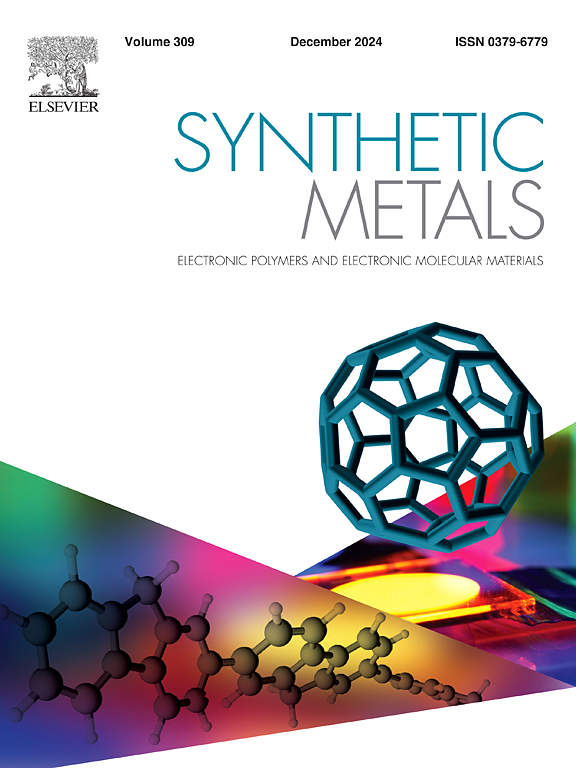用于OLED应用的锌基有机金属配合物
IF 4.6
3区 材料科学
Q2 MATERIALS SCIENCE, MULTIDISCIPLINARY
引用次数: 0
摘要
锌基有机金属配合物因其独特的电子结构、环境安全性和成本效益而成为下一代有机发光二极管(OLED)应用的有前途的材料。与传统的磷光或热激活延迟荧光(TADF)发射器不同,Zn(II)配合物通过配体中心(LC)和配体到配体的电荷转移(LLCT)转变起作用,无需依赖重金属即可实现精确的颜色调节。这些材料的理论内部量子效率上限为25% %。然而,它们与基于溶液的生产兼容,热稳定,易于合成,低毒性和相对低成本的生产,使它们成为可持续光电技术的吸引力。本文系统地研究了锌(II)配合物的发光颜色,包括蓝色、绿色、黄色、红色和白色。它还强调了影响其光物理性质和器件性能的分子设计策略。我们强调分子结构,电子行为和OLED功能之间的关系,以指导新的锌基发射体的合理设计。这些见解为未来可持续、高性能OLED材料的研究奠定了基础,突出了Zn(II)配合物作为可扩展、低毒性光电技术的有前途的途径。本文章由计算机程序翻译,如有差异,请以英文原文为准。
Zinc based organic metal complexes for OLED applications
Zinc-based organic metal complexes have emerged as promising materials for next-generation organic light-emitting diode (OLED) applications due to their unique electronic structure, environmental safety, and cost-effectiveness. Unlike traditional phosphorescent or thermally activated delayed fluorescence (TADF) emitters, Zn(II) complexes operate via ligand-centered (LC) and ligand-to-ligand charge transfer (LLCT) transitions, enabling precise color tuning without relying on heavy metals. These materials have a theoretical internal quantum efficiency cap of 25 %. Yet, they are compatible with solution-based production, thermally stable, easy synthesis, low toxicity, and relatively low-cost production, making them appealing for sustainable optoelectronic technologies. This review systematically examines Zn(II) complexes categorized by emission color, including blue, green, yellow, red, and white. It also highlights the molecular design strategies that influence their photophysical properties and device performance. We emphasize the relationship between molecular structure, electronic behavior, and OLED functionality to guide the rational design of new Zn-based emitters. These insights lay the groundwork for future research into sustainable, high-performance OLED materials, highlighting Zn(II) complexes as a promising route toward scalable, low-toxicity optoelectronic technologies.
求助全文
通过发布文献求助,成功后即可免费获取论文全文。
去求助
来源期刊

Synthetic Metals
工程技术-材料科学:综合
CiteScore
8.30
自引率
4.50%
发文量
189
审稿时长
33 days
期刊介绍:
This journal is an international medium for the rapid publication of original research papers, short communications and subject reviews dealing with research on and applications of electronic polymers and electronic molecular materials including novel carbon architectures. These functional materials have the properties of metals, semiconductors or magnets and are distinguishable from elemental and alloy/binary metals, semiconductors and magnets.
 求助内容:
求助内容: 应助结果提醒方式:
应助结果提醒方式:


